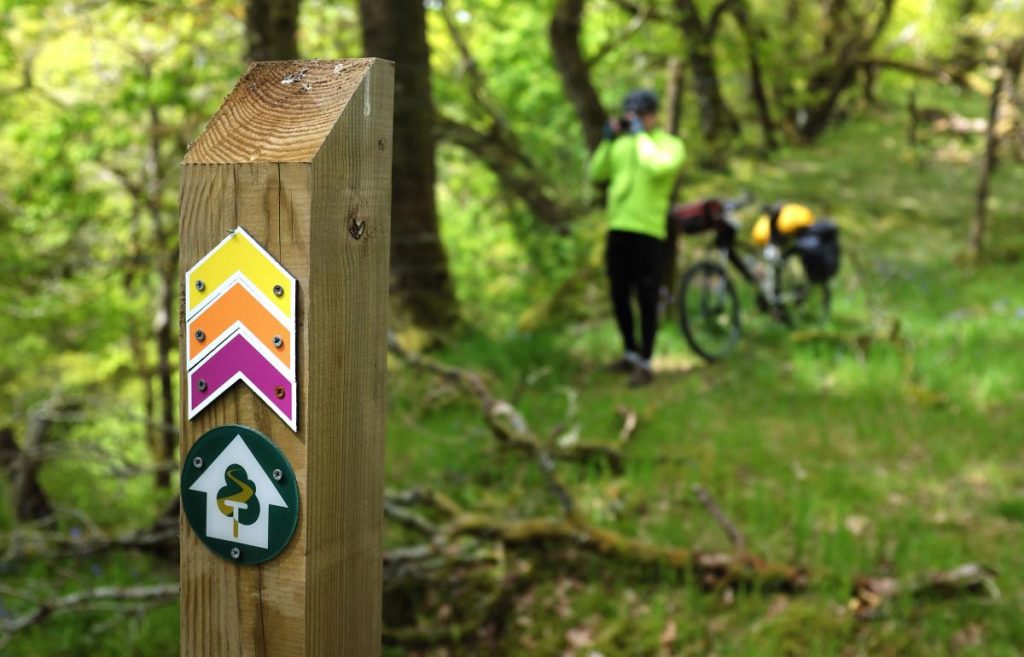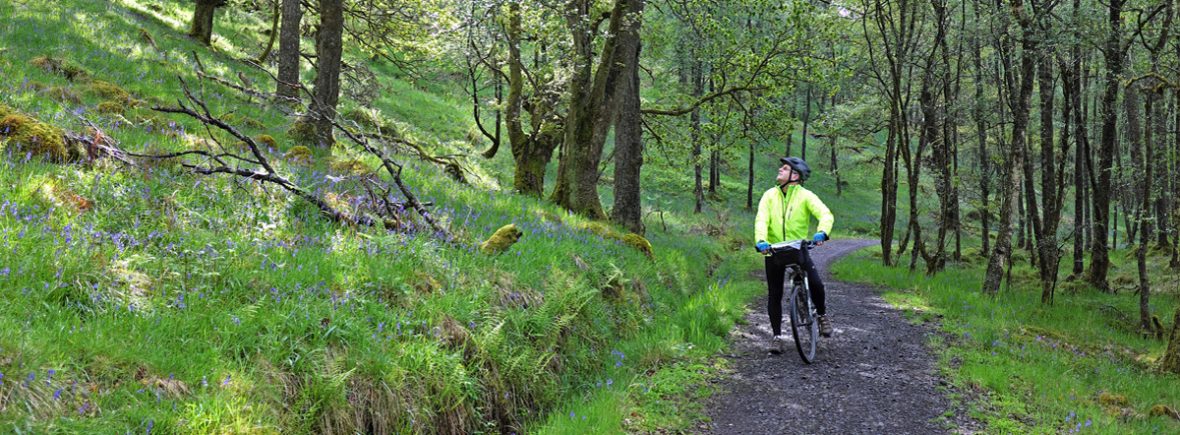Loch Lomond and the Trossachs National Park, Scotland
The Great Trossachs Path, an inviting new path for cyclists and walkers leads through Scotland’s first national park, Loch Lomond and the Trossachs.
BY EMMA GREGG
Ten minutes into our 30-mile cycle ride to Loch Lomond, we are faced with a choice: high road or low road? Fine for time, we are feeling adventurous. Imaginary bagpipes and drums strike up in our heads. “High road it is.”
We are exploring the Great Trossachs Path, a new route between the Victorian town of Callander and Lomond’s bonnie, bonnie banks. When the last few wayposts were installed this spring, hikers were delighted. The path links two established long-distance footpaths, the West Highland Way and Rob Roy Way, within Scotland’s first national park, Loch Lomond and The Trossachs. It’s also cycle friendly. Following lochside tracks and quiet private roads, it promises rousing mountain views with manageable gradients and minimal traffic.
Callander already has several Sustrans routes on its doorstep, but a new 48km (30 mile) crosscountry cycle path is a feather in its cap. Keen to give it a try, we bundle our bikes on to the sleeper train at London Euston, primed for a car-free adventure.
We wake at dawn to peer sleepily through our cabin window, catching glimpses of deer in dewy meadows as our train speeds north. At Dunblane, we lower our bikes on to a deserted platform and ride through empty streets. It is barely 5am, but the town is already bathed in summer sunshine. The ride to Callander sends our spirits soaring. Leaving the tarmac behind, we cycle past rolling fields of blackfaced sheep while yellowhammers sing brightly from every hedgerow.
Known as the “Gateway to the Highlands”, Callander has its own quiet drama. Picturesque enough to inspire Wordsworth, Keats and Sir Walter Scott in the early 1800s, it was attracting floods of tourists by the end of that century. The railway which carried them fell under Beeching’s axe in 1965, but traces of it remain, converted into cycle paths. We decide to test out one of these, National Cycle Route 7, as a warm-up.
Fuelled with coffee and carbs from Callander’s artisan bakery, Mhor Bread, we pick up Route 7 in a riverside park where railway signals remain as mementos. From here, we ride through dappled woodlands, fresh with the colour and fragrance of summer.

We pause at the café run by Forest Holidays Strathyre, an upmarket array of cabins in Queen Elizabeth Forest Park. Leaflets offering wildlife-watching and forest activity days flutter on the walls and telescopes are set up on the deck. “For watching stags and golden eagles,” explains Jack Black, resident forest ranger.
Black, an ex-soldier whose past exploits include escaping bears in Canada and climbing Everest, recently returned to the Trossachs to help open up its landscapes to the community. He now leads walks, canoe treks and forest focused youth projects. “Embracing nature has helped heal my own emotional scars and I want to bring those benefits to others,” he says.
We encounter a group of young explorers further up the path. With rucksacks on their backs and maps around their necks, they are clearly enjoying the adventure. They politely step aside as we approach, and even do a Mexican wave as we pass.
Our turning point is The Inn at Strathyre. Like many pubs and B&Bs in central Scotland, it’s run by an outdoors enthusiast. When we tell the owner/chef Stephen Nixon that we are limbering up for the Great Trossachs Path, he suggests we take an uphill detour on our way back. “When I’m out for a run, that’s the way I go. It’s steep, but the views are incredible.”
Completing Stephen’s route with energy to spare, we feel ready to tackle the Great Trossachs Path the following day. But as it turns out, the high road past Loch Venachar gives our confidence a beating. This winding hillside track is tough enough to test a Highland sheep. As we grapple with its peaks and troughs, the low road, clearly visible far below, looks devastatingly appealing.
Thankfully, there are heartstirring views to distract us. We are riding through the Great Trossachs Forest, a “forest of the future”, one of the most significant British conservation projects for a generation. Here, Scotland’s Forestry Commission, Woodland Trust and RSPB are replacing ranks of spruce with native oaks, birches and clearings. Within 200 years, the landscape will be transformed. For now, it’s bright with flowering gorse and deliciously sweetly-scented.
Our next big challenge is to skirt Loch Katrine, the shimmering reservoir which inspired Scott to write The Lady of the Lake. You can potter across the water in a beautifully-restored steamer bearing his name, but we opt for the cycle-friendly private road along the bank. Chaffinches and robins trill from the trees as we pass, giving a thrilling sense of what the Great Trossachs Forest could soon become.
Beside Loch Arklet there is, once again, a choice of routes, high or low. This time, we take the low road, a straight march built to defend the wild, dour slopes from Rob Roy and his cattlethieving comrades. Three centuries on, it’s still known as the Military Road.
Finally, it is downhill with a rollercoaster rush to Loch Lomond, where, right on the bank, there’s a new RSPB woodland trail to explore. Gorgeous in summer, its oak trees must look wonderful in autumn. Something tells me we’ll be back to find out.
MAKING THE WORLD A BETTER PLACE
Getting there
We travelled to Dunblane as guests of the Caledonian Sleeper, on its London Euston Highland Route (03300 600500; sleeper.scot). Cycles are permitted free, but must be reserved in advance.
Getting around
In summer, a passenger ferry (01301 702356; cruiselochlomond.co.uk) crosses Loch Lomond between Inversnaid and Tarbet, where there’s a mainline railway station. There’s also a ferry between Trossachs Pier and Stronachlachar on Loch Katrine (01877 376315; lochkatrine.com). Both ferries carry bicycles.
Staying, eating and drinking
Excellent places to eat and drink between Callander and Loch Lomond include Venachar Lochside (01877 330011, venachar-lochside.com), The Byre Inn (01877 376292; byreinn.co.uk) and the Inversnaid Bunkhouse (01877 386249; inversnaid.com), which offers basic accommodation and hearty food.
Further information
RSPB Loch Lomond is open daily (01389 830670; rspb.org.uk).
Great Trossachs Path and the Great Trossachs Forest: thegreattrossachsforest.co.uk
Visit Scotland: visitscotland.com
All About Everywhere, January 2016
A version of this article appeared in The Independent in July 2015.
© Emma Gregg, 2015 • all rights reserved
